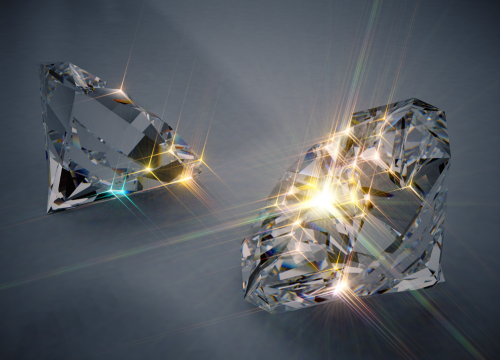
Diamond and graphite are two well-known allotropes of carbon, each with distinct physical and chemical properties. However, despite these differences, there are notable similarities between the two structures. This article explores the commonalities, shedding light on the shared characteristics of diamond and graphite.
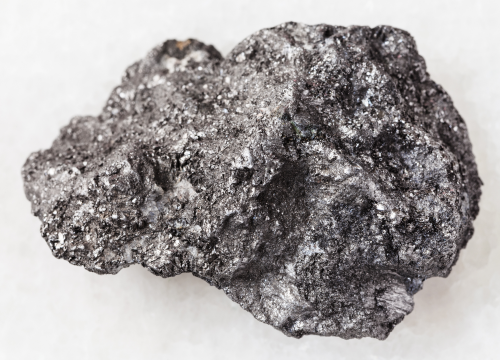
Chemical Composition:
- Diamond: Composed of carbon atoms arranged in a tetrahedral crystal lattice structure, with each carbon atom bonded to four others through strong covalent bonds.
- Graphite: Also consists of carbon atoms, but arranged in hexagonal layers where each carbon atom is bonded to three others through strong covalent bonds within the layer.
Allotropy:
- Diamond: Represents one of the crystalline forms (allotropes) of carbon, characterized by its hardness and exceptional optical properties.
- Graphite: Another allotrope of carbon, known for its slippery and lubricating properties, especially between layers.
Covalent Bonding:
- Diamond: Features a three-dimensional network of covalently bonded carbon atoms, resulting in its remarkable hardness and high melting point.
- Graphite: Exhibits strong covalent bonds within the hexagonal layers but weaker forces (van der Waals forces) between the layers, allowing for lubrication and easy cleavage.
Electrical Conductivity:
- Diamond: Insulator due to a lack of free electrons and an absence of delocalized electron movement.
- Graphite: Good conductor of electricity within the layers due to delocalized pi electrons, while still maintaining lubricating properties.
Thermal Conductivity:
- Diamond: Exceptional thermal conductor due to the rigid, tightly bonded structure.
- Graphite: Also exhibits good thermal conductivity within the layers but is more variable across layers due to weaker interlayer forces.
Crystal Structure:
- Diamond: Crystallizes in the cubic crystal system, forming a tetrahedral structure.
- Graphite: Crystallizes in the hexagonal crystal system, forming layered structures.
Conclusion:
In conclusion, while diamond and graphite have distinct properties, they share fundamental similarities, primarily arising from their carbon composition and covalent bonding. Understanding these similarities enhances our comprehension of the diverse behaviors exhibited by carbon allotropes.
Here’s a simplified comparison table highlighting the similarities between diamond and graphite:
| Aspect | Diamond | Graphite |
| Chemical Composition | Carbon atoms in a tetrahedral crystal lattice structure | Carbon atoms in hexagonal layers |
| Allotropy | Crystalline form with exceptional hardness | Crystalline form with lubricating properties between layers |
| Covalent Bonding | Strong covalent bonds, each carbon bonded to four others | Strong covalent bonds within layers, weaker forces between layers |
| Electrical Conductivity | Insulator due to a lack of free electrons | Good conductor within layers due to delocalized pi electrons |
| Thermal Conductivity | Exceptional thermal conductor due to rigid structure | Good thermal conductivity within layers, variable across layers |
| Crystal Structure | Cubic crystal system, forming a tetrahedral structure | Hexagonal crystal system, forming layered structures |
| Hardness | Extremely hard | Relatively soft |
| Applications | Gemstone, cutting tools, abrasive materials | Lubricants, pencils, batteries, thermal management materials |
Note: This table provides a concise overview of the similarities between diamond and graphite. The actual properties and applications can vary based on specific conditions and forms of these carbon allotropes.
Frequently Asked Questions (FAQ) on Diamond and Graphite:
Q1: What are diamond and graphite made of?
A1: Both diamond and graphite are composed of carbon atoms. In diamond, carbon atoms are arranged in a tetrahedral crystal lattice structure, while in graphite, carbon atoms form hexagonal layers.
Q2: Why is diamond hard while graphite is soft?
A2: Diamond is hard due to its three-dimensional network of strong covalent bonds between carbon atoms, providing rigidity. Graphite is soft because it consists of layers with strong covalent bonds within each layer but weaker forces between layers, allowing them to slide over each other easily.
Q3: Are diamond and graphite electrical conductors?
A3: Diamond is an insulator as it lacks free electrons for conductivity. Graphite, however, is a good electrical conductor within its layers due to delocalized pi electrons.
Q4: How do the crystal structures of diamond and graphite differ?
A4: Diamond crystallizes in the cubic crystal system, forming a tetrahedral structure. Graphite crystallizes in the hexagonal crystal system, forming layered structures.
Q5: Why is diamond transparent, but graphite is opaque?
A5: The transparency of diamond is due to its crystal structure allowing light to pass through without scattering. Graphite’s opacity results from the stacked layers that absorb and scatter light.
Q6: Can diamond and graphite conduct heat differently?
A6: Yes, diamond has exceptional thermal conductivity due to its rigid structure, while graphite also conducts heat well within its layers but is more variable across layers due to weaker interlayer forces.
Q7: What are some practical applications of diamond and graphite?
A7: Diamond is used in jewelry, cutting tools, and abrasives. Graphite is used in lubricants, pencils, batteries, and materials for thermal management.
Q8: Are there any similarities in the atomic composition of diamond and graphite?
A8: Both diamond and graphite are composed solely of carbon atoms. The differences lie in their arrangement and bonding within these carbon structures.
Q9: Do diamond and graphite have similar melting points?
A9: No, diamond has a much higher melting point than graphite. Diamond’s strong covalent bonds require more energy to break compared to the weaker forces in graphite.
Q10: Are there other forms of carbon allotropes besides diamond and graphite?
A10: Yes, carbon exhibits various allotropes, including fullerenes (e.g., buckyballs and nanotubes) and amorphous carbon (e.g., coal and charcoal), each with distinct structures and properties.
Q11: Can diamond and graphite transform into each other under certain conditions?
A11: In theory, under extreme conditions such as high pressure and temperature, diamond could transform into graphite or vice versa. However, these conditions are not easily achieved in everyday environments.
Q12: How do the optical properties of diamond and graphite differ?
A12: Diamond has high optical dispersion, resulting in its brilliance and ability to split light into its spectral colors (fire). Graphite, being opaque, does not exhibit these optical properties.
Q13: Are there environmental or geological factors that influence the formation of diamond and graphite?
A13: Yes, both diamond and graphite are formed under different geological conditions. Diamonds typically form under high pressure and temperature in the Earth’s mantle, while graphite is often associated with lower pressure and temperature conditions.
Q14: Can diamond and graphite be synthesized in laboratories?
A14: Yes, both diamond and graphite can be synthesized in laboratories. Synthetic diamonds are produced using high-pressure high-temperature (HPHT) or chemical vapor deposition (CVD) methods. Graphite can be synthesized using various methods, including chemical vapor deposition.
Q15: Are there health concerns associated with exposure to diamond or graphite?
A15: Diamond is generally inert and poses little risk to health. Graphite, when inhaled in large quantities as dust, may cause respiratory issues. However, the forms of graphite used in common applications like pencils are generally safe.
Q16: How do diamond and graphite contribute to advancements in technology?
A16: Diamond is used in cutting tools for machining hard materials and in various industrial applications. Graphite plays a role in technologies such as batteries, fuel cells, and as a lubricant in various mechanical systems.
Q17: Can the electrical properties of graphite be modified for specific applications?
A17: Yes, graphite’s electrical conductivity can be enhanced or modified through various treatments, making it suitable for different technological applications, including in electronics and energy storage devices.
Q18: Do diamond and graphite have isotropic or anisotropic properties?
A18: Diamond is isotropic, meaning its properties are the same in all directions. Graphite is anisotropic, exhibiting different properties along and across its layers.
Q19: How do diamond and graphite contribute to Earth’s carbon cycle?
A19: Both diamond and graphite are part of the Earth’s carbon cycle. While diamonds can be subducted into the mantle, graphite is more stable and often remains near the Earth’s surface.
Q20: Are there ongoing research efforts exploring new applications for diamond and graphite?
A20: Yes, ongoing research explores novel applications for diamond and graphite, ranging from improving industrial processes to enhancing the performance of electronic devices. The unique properties of these carbon allotropes continue to inspire innovative technologies.


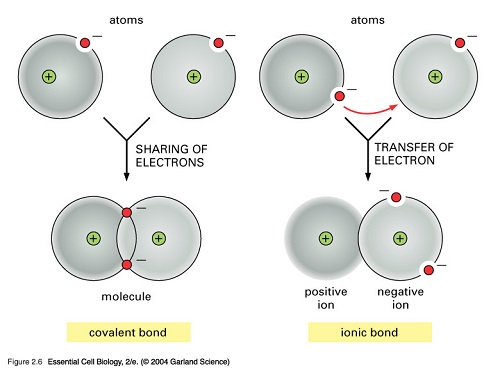
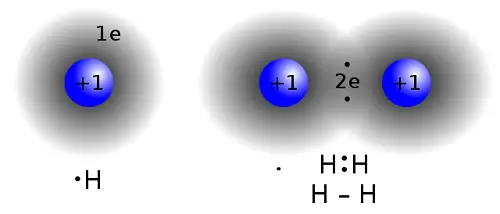


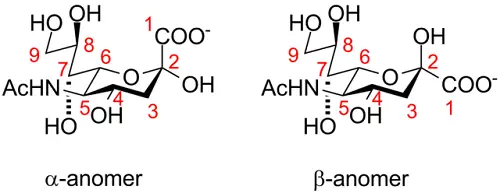





Leave a Reply